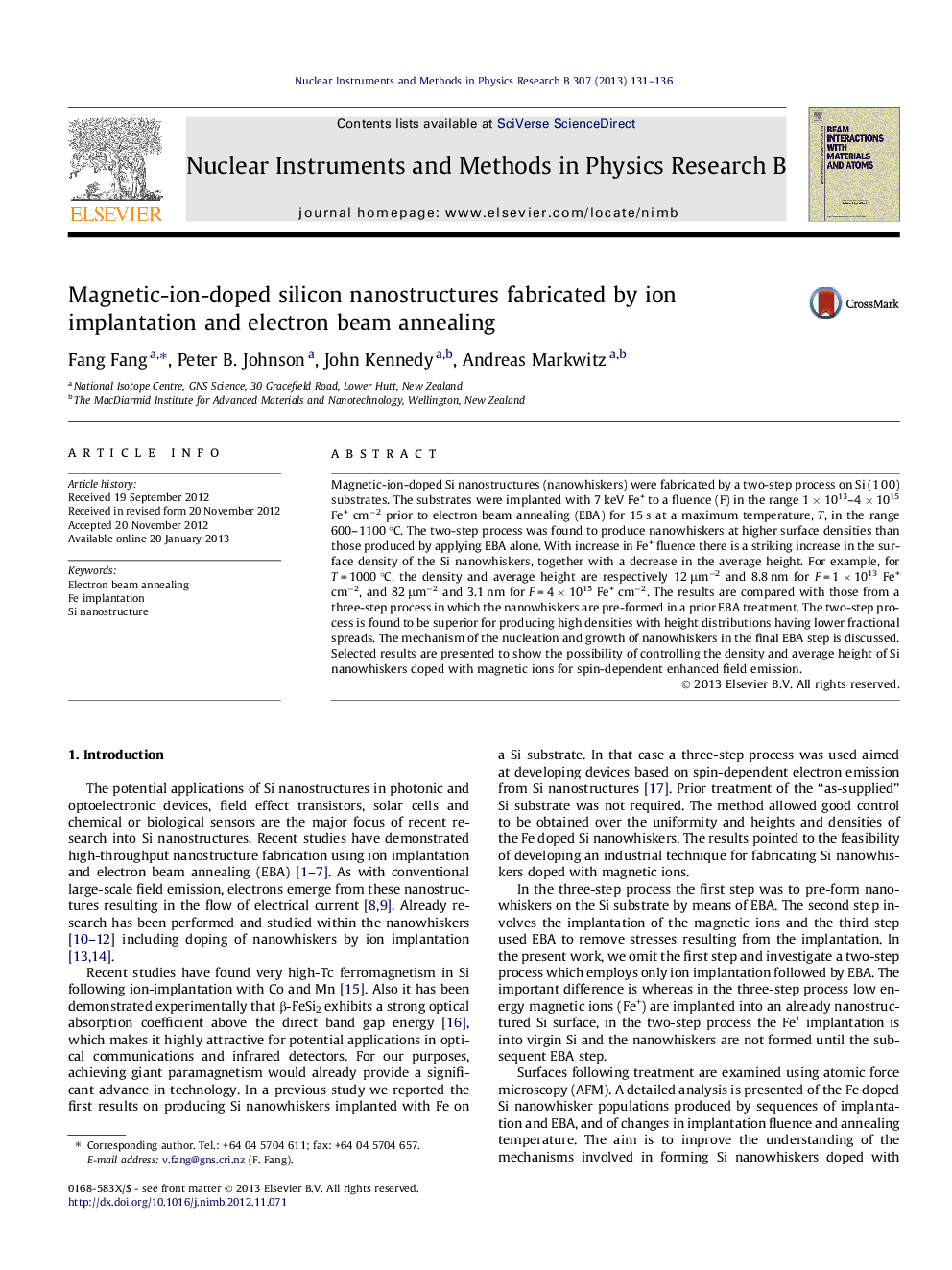| Article ID | Journal | Published Year | Pages | File Type |
|---|---|---|---|---|
| 1681973 | Nuclear Instruments and Methods in Physics Research Section B: Beam Interactions with Materials and Atoms | 2013 | 6 Pages |
Abstract
Magnetic-ion-doped Si nanostructures (nanowhiskers) were fabricated by a two-step process on Si (1 0 0) substrates. The substrates were implanted with 7 keV Fe+ to a fluence (F) in the range 1 Ã 1013-4 Ã 1015 Fe+ cmâ2 prior to electron beam annealing (EBA) for 15 s at a maximum temperature, T, in the range 600-1100 °C. The two-step process was found to produce nanowhiskers at higher surface densities than those produced by applying EBA alone. With increase in Fe+ fluence there is a striking increase in the surface density of the Si nanowhiskers, together with a decrease in the average height. For example, for T = 1000 °C, the density and average height are respectively 12 μmâ2 and 8.8 nm for F = 1 Ã 1013 Fe+ cmâ2, and 82 μmâ2 and 3.1 nm for F = 4 Ã 1015 Fe+ cmâ2. The results are compared with those from a three-step process in which the nanowhiskers are pre-formed in a prior EBA treatment. The two-step process is found to be superior for producing high densities with height distributions having lower fractional spreads. The mechanism of the nucleation and growth of nanowhiskers in the final EBA step is discussed. Selected results are presented to show the possibility of controlling the density and average height of Si nanowhiskers doped with magnetic ions for spin-dependent enhanced field emission.
Related Topics
Physical Sciences and Engineering
Materials Science
Surfaces, Coatings and Films
Authors
Fang Fang, Peter B. Johnson, John Kennedy, Andreas Markwitz,
